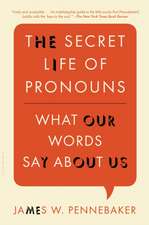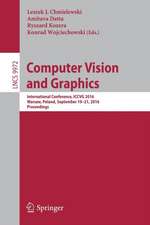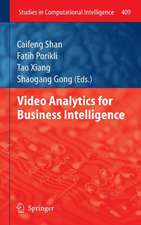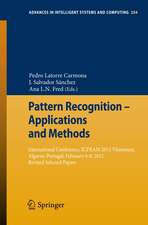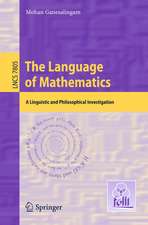Visual Analysis of Behaviour: From Pixels to Semantics
Autor Shaogang Gong, Tao Xiangen Limba Engleză Paperback – 31 aug 2014
| Toate formatele și edițiile | Preț | Express |
|---|---|---|
| Paperback (1) | 990.95 lei 6-8 săpt. | |
| SPRINGER LONDON – 31 aug 2014 | 990.95 lei 6-8 săpt. | |
| Hardback (1) | 995.75 lei 6-8 săpt. | |
| SPRINGER LONDON – 27 mai 2011 | 995.75 lei 6-8 săpt. |
Preț: 990.95 lei
Preț vechi: 1238.69 lei
-20% Nou
Puncte Express: 1486
Preț estimativ în valută:
189.64€ • 205.92$ • 159.30£
189.64€ • 205.92$ • 159.30£
Carte tipărită la comandă
Livrare economică 22 aprilie-06 mai
Preluare comenzi: 021 569.72.76
Specificații
ISBN-13: 9781447161240
ISBN-10: 1447161246
Pagini: 376
Ilustrații: XIX, 356 p.
Dimensiuni: 155 x 235 x 20 mm
Greutate: 0.53 kg
Ediția:2011
Editura: SPRINGER LONDON
Colecția Springer
Locul publicării:London, United Kingdom
ISBN-10: 1447161246
Pagini: 376
Ilustrații: XIX, 356 p.
Dimensiuni: 155 x 235 x 20 mm
Greutate: 0.53 kg
Ediția:2011
Editura: SPRINGER LONDON
Colecția Springer
Locul publicării:London, United Kingdom
Public țintă
ResearchCuprins
Part I: Introduction.- About Behaviour.- Behaviour in Context.- Towards Modelling Behaviour.- Part II: Single-Object Behaviour.- Understanding Facial Expression.- Modelling Gesture.- Action Recognition.- Part III: Group Behaviour.- Supervised Learning of Group Activity.- Unsupervised Behaviour Profiling.- Hierarchical Behaviour Discovery.- Learning Behavioural Context.- Modelling Rare and Subtle Behaviours.- Man in the Loop.- Part IV: Distributed Behaviour.- Multi-Camera Behaviour Correlation.- Person Re-Identification.- Connecting the Dots.- Epilogue.
Recenzii
From the reviews:
“The book aims to describe, analyze, and present the problem of visual analysis of behaviour of objects, with an emphasis on behaviour of people. I have thoroughly enjoyed going through the book and find it a strong contribution to the area of computer vision and automated visual analysis. … The book is well suited for academics and researchers … and would be a great resource for implementing any of the algorithms described therein.” (Elena Corina Grigore, Perception, Vol. 42, 2013)
“This book presents a comprehensive introduction to algorithms and methodologies for representing, learning, recognizing, interpreting and predicting human behaviour, on the basis of visual data. Examples of human behaviour are given by facial expression, body gesture and human action. The book is mainly intended for readers interested in applications in the fields of visual surveillance, video indexing and search, robotics and healthcare, interaction, animation and computer games.” (Patrizio Frosini, Zentralblatt MATH, Vol. 1238, 2012)
“The book aims to describe, analyze, and present the problem of visual analysis of behaviour of objects, with an emphasis on behaviour of people. I have thoroughly enjoyed going through the book and find it a strong contribution to the area of computer vision and automated visual analysis. … The book is well suited for academics and researchers … and would be a great resource for implementing any of the algorithms described therein.” (Elena Corina Grigore, Perception, Vol. 42, 2013)
“This book presents a comprehensive introduction to algorithms and methodologies for representing, learning, recognizing, interpreting and predicting human behaviour, on the basis of visual data. Examples of human behaviour are given by facial expression, body gesture and human action. The book is mainly intended for readers interested in applications in the fields of visual surveillance, video indexing and search, robotics and healthcare, interaction, animation and computer games.” (Patrizio Frosini, Zentralblatt MATH, Vol. 1238, 2012)
Textul de pe ultima copertă
Demand continues to grow worldwide, from both government and commerce, for technologies capable of automatically selecting and identifying object and human behaviour.
This accessible text/reference presents a comprehensive and unified treatment of visual analysis of behaviour from computational-modelling and algorithm-design perspectives. The book provides in-depth discussion on computer vision and statistical machine learning techniques, in addition to reviewing a broad range of behaviour modelling problems. A mathematical background is not required to understand the content, although readers will benefit from modest knowledge of vectors and matrices, eigenvectors and eigenvalues, linear algebra, optimisation, multivariate analysis, probability, statistics and calculus.
Topics and features:
Dr. Shaogang Gong is a Professor of Visual Computation in the School of Electronic Engineering and Computer Science at Queen Mary University of London, UK. Dr. Tao Xiang is a Lecturer at the same institution.
This accessible text/reference presents a comprehensive and unified treatment of visual analysis of behaviour from computational-modelling and algorithm-design perspectives. The book provides in-depth discussion on computer vision and statistical machine learning techniques, in addition to reviewing a broad range of behaviour modelling problems. A mathematical background is not required to understand the content, although readers will benefit from modest knowledge of vectors and matrices, eigenvectors and eigenvalues, linear algebra, optimisation, multivariate analysis, probability, statistics and calculus.
Topics and features:
- Provides a thorough introduction to the study and modelling of behaviour, and a concluding epilogue
- Covers learning-group activity models, unsupervised behaviour profiling, hierarchical behaviour discovery, learning behavioural context, modelling rare behaviours, and “man-in-the-loop” active learning of behaviours
- Examines multi-camera behaviour correlation, person re-identification, and “connecting-the-dots” for global abnormal behaviour detection
- Discusses Bayesian information criterion, static Bayesian graph models, “bag-of-words” representation, canonical correlation analysis, dynamic Bayesian networks, Gaussian mixtures, and Gibbs sampling
- Investigates hidden conditional random fields, hidden Markov models, human silhouette shapes, latent Dirichlet allocation, local binary patterns, localitypreserving projection, and Markov processes
- Explores probabilistic graphical models, probabilistic topic models, space-time interest points, spectral clustering, and support vector machines
- Includes a helpful list of acronyms
Dr. Shaogang Gong is a Professor of Visual Computation in the School of Electronic Engineering and Computer Science at Queen Mary University of London, UK. Dr. Tao Xiang is a Lecturer at the same institution.
Caracteristici
Presents a comprehensive and unified treatment of visual analysis of behaviour from computational-modelling and algorithm-design perspectives Provides analysis of current benchmarking databases and commercial systems Includes a helpful list of acronyms Includes supplementary material: sn.pub/extras







